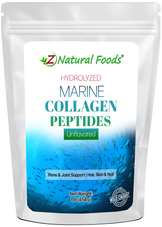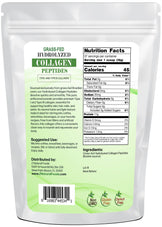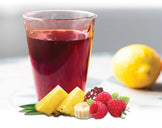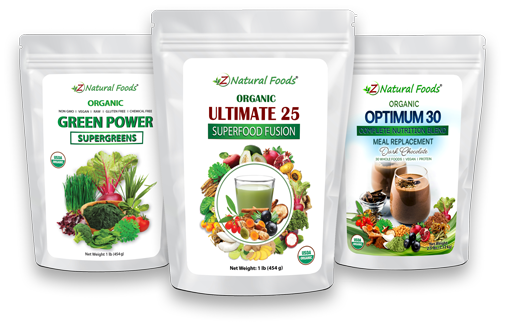Description
Description
When looking at the foundation of human health and the foods that support these various factors, the macronutrient protein is at the top of the list.
Whether building healthy muscle tissue or supporting cartilage, tendons, ligaments, and collagen synthesis, vital amino acids found in various forms of protein are the essential building blocks to support these foundational aspects and vital processes.
Before we discuss the difference between pea and collagen proteins, it is critical to understand some basic protein facts.
Here are some fun facts about proteins and amino acids:
- There are 20 different amino acids that your body needs for various functions.
- Eleven of the twenty are produced by the body, called non-essential amino acids, and we must get the other nine(called essential amino acids) from food because the body can’t produce them.
- Amino acids are organic compounds, and building blocks your body uses to make protein.
- A food is considered a complete protein when it contains all nine essential amino acids in appropriate ratio amounts - Histidine, Isoleucine, Leucine, Lysine, Methionine, Phenylalanine, Threonine, Tryptophan, and Valine.
Here is what we know about basic physiology and protein metabolism:
- Proteins are not stored for later use.
- The body converts excess protein into glucose or triglycerides to supply energy or build energy reserves.
- When we eat a complete source of protein, the body breaks it down into amino acids to create muscle protein along with a host of other proteins in the body for enzymatic (Enzymes are essentially protein molecules) reactions.
- The nine essential amino acids also act as regulatory signaling molecules.
Finally, it is also essential to understand the difference between denatured and undenatured protein:
- Denatured protein is the alteration in the folding pattern of a protein by heat or chemical reaction from its original formation. Protein function depends on its structural shape, and heat causes proteins to vibrate, weakening the bonds that hold their complex shape.
- Undenatured proteins are pure, properly functioning proteins without structural deformation, with all bioavailable nutrients and constituents.
Therefore, we should avoid using the term “unprocessed” to define an undenatured protein because everything goes through some processing to create an end product.
For example, protein isolates undergo a precise filtration process, producing an end product yielding more protein per serving.
It is also misleading when people say denatured proteins are unsuitable for us. A protein can become denatured through cooking with heat or some other process. For example, a hard-boiled egg is regarded as a form of denatured protein. The heat used to make a hard-boiled egg changed its structural integrity, but it still has excellent nutritional value and all the amino acids to create a complete protein.
The difference between Collagen Protein and Pea Protein
Collagen Protein
Collagen is a protein the body produces that supports the structure and function of hair, skin, nails, cartilage, bones, blood vessels, and connective tissue.
Collagen is the human body's most abundant protein, representing 35% of its dry weight. It comprises 19 essential and nonessential amino acids and three chains wound into a tight helix, each 1400 amino acids long. Collagen is primarily made up of the amino acids Glycine (33% of total collagen), hydroxyproline and proline (22% of total collagen), and glutamate (derived from its precursor glutamine and an essential precursor for proline).
Next, let's review the attributes of a popular form known as collagen peptides.
Collagen peptides may go by several other names, like collagen hydrolysate and hydrolyzed collagen. All collagen, by definition, is technically hydrolyzed, but there are different levels to this process(partially and fully). For example, gelatin is partially hydrolyzed, and collagen peptides are fully hydrolyzed.
Finally, hydrolyzed collagen is, by definition, a denatured protein. Now, to understand what hydrolyzed collagen is, it is also essential to understand the hydrolyzation process. Hydrolyzed collagen is created through hydrolysis, a process where water molecules rupture the chemical bond.
What are the Benefits of Collagen?
While the most well-documented benefits of collagen support all aspects of the body’s structural integrity (Hair, Skin, Nails, Joints, Tendons, and Ligaments), each source is known for being abundant in specific types of collagen.
This creates a more targeted approach to why you may use specific types of collagen.
So, what makes collagen protein so unique?
- Collagen protein displays a low indispensable amino acid profile.
- Collagen has a unique amino acid profile(high in glycine, proline, and hydroxyproline). These three amino acids comprise 50% of collagen, and the other 16 comprise the other 50%. Tryptophan is the only essential amino acid missing.
- While proline and glycine are considered non-essential amino acids, they are also considered conditionally essential during illness, stress, and trauma.
- This powerful trio of amino acids is only found in collagen protein and nowhere else in the edible world. Therefore, the lack of essential amino acids is irrelevant because of collagen's function and purpose.
Chicken Collagen
Chicken comprises Type II collagen, found in elastic cartilage, which gives cartilage strength and elasticity and provides joint support. It also supports the binding process with the help of fibronectin(A glycoprotein that plays an essential role in tissue repair) and other collagens. This type of collagen is derived from chicken sternum cartilage. In simple terms, type 2 collagen is a peptide and component of joint cartilage. Type 2 collagen can be found as hydrolyzed or undenatured.
Beef Collagen
A good portion of the market's hydrolyzed/ peptide collagen products come from beef bones(unless otherwise noted) and are a quality source of Types I and III. As mentioned earlier in the article,
- Type I makes up 90% of your body’s collagen and is densely packed to provide structure for your skin, bones, tendons, and ligaments.
- Type III is a significant extracellular matrix component found in muscles, arteries, blood vessels, and organs. Specific to tissues with large portions of elastic fibers. Type III collagen also interacts with platelets in the blood clotting cascade and is an essential signaling molecule in wound healing.
Marine Collagen
Type 1 collagen: The superstar of collagen from the sea
Type I collagen comprises 90% of your body’s collagen and is densely packed to provide structure for your skin, bones, tendons, and ligaments; this can be found in highly nourishing quantities in marine collagen.
As a side note, type III collagen is another type of fibrillar collagen often associated with type I. Type III is thinner and present in high concentrations in the skin and blood vessels. While much more human research is needed, Marine collagen has been shown in preliminary research and some small clinical studies to support skin health.
Pea Protein
Pea protein is now used in various products, from protein bars and shakes to protein pancakes and oatmeal.
It is also a source of essential amino acids, making it an excellent choice for those looking to increase their protein intake without relying on animal products. On average, pea protein yields about 80% protein content. While it is mainly utilized as a concentrated product, pea protein is also available in different forms, including pea flour and pea protein isolate.
According to a paper titled The Current Situation of Pea Protein and Its Application in the Food Industry,
- Pea protein extraction requires selecting appropriate treatments to maximize yields and estimate functional, nutritional, and structural properties that affect their applicability in the food industry.
- Before protein extraction, pea seeds undergo pre-treatment steps such as cleaning, drying, sorting, dehulling, and splitting that allow the detachment of the hulls and the cotyledons from whole pulses; therefore, it facilitates protein extraction without affecting their techno-functional properties.
- The extraction method, pH, duration of solubilization, number of washes, ionic strength, solvation ratio, temperature, extraction equipment, and filtration or purification techniques are some factors that influence the efficiency of the extraction as well as the protein isolate characteristics.
Several extraction techniques are used to obtain pea protein concentrates and isolates:
- Wet extraction, or alkaline extraction, is the most frequently used conventional technique for producing pea protein isolates (highly concentrated protein fractions). This process takes advantage of using high solubility of proteins under alkaline conditions.
- Dry fractionation or milling is commonly used to fraction protein into thin or delicate fractions (protein concentrate). In dry fractionation, dehulling of seeds is carried out as a pre-treatment because it reduces antinutritional factors, separates bitter or astringent components, and improves color, resulting in a slight increase in protein content. The principle behind dry fractionation is classifying flour into different particle sizes and the chemical composition after milling.
- Salt extraction - This method extracts proteins from seed material in a salt solution at a neutral pH. Salt extraction has the advantage of the salting-in and salting-out phenomena of proteins, followed by a desalting process that reduces the ionic strength of the protein environment.
- Mild fractionation - The mild fractionation process produces pea protein isolates using a hybrid approach method. Hybrid methods mean adopting specific steps from both dry and wet methods. In this process, the fine fraction of pea flour is immersed in water and then fractionated by a layer-by-layer separation by using centrifugation forces or additional purification to increase its purity (70–90 g protein in 100 g dry matter).
This chart is a good reference when comparing the amino acid profile of pea and whey proteins.
So, what is the difference between pea and collagen proteins?
While both of these protein sources are highly versatile functional foods, they essentially have very different functions.
What most people consider to be collagen’s greatest pitfall of being an incomplete protein is, in fact, its most significant attribute and what makes collagen such an outstandingly unique food with some very unique qualities.
As a functional food, collagen is a source of physiologically active peptides and conditionally essential amino acids that have the potential to optimize health and address physiological needs posed by aging and exercise.
While pea protein contains all nine essential amino acids (especially high in the BCAA’s), it is low in methionine, creating an imbalanced amino acid profile, so it is not an actual complete protein.
So, to create a more balanced amino acid profile, adding some rice protein would be in your best interest. Remember that a food can be considered an incomplete protein if one or more of the essential amino acids are insufficient, even if all nine EAAs are present.
How insufficient is defined through the amino acid score. The score is calculated by dividing the content of individual EAAs in food protein by the content of the same amino acid in the reference pattern. The body is only concerned about having all nine essential amino acids present when creating muscle and enzyme proteins. The overall result is the same whether the protein comes from a single source of complete protein like egg and whey or combined sources to create a complete protein like plant proteins.
However, Pea Protein has some unique attributes as it contains over five times the amount of Arginine compared to whey protein.
Arginine has been studied to support healthy nitric oxide (NO) levels, which produces a wide array of health benefits. A review discussing nitric oxide's role stated, “Within the vasculature, NO induces vasodilation, inhibits platelet aggregation, prevents neutrophil/platelet adhesion to endothelial cells, inhibits smooth muscle cell proliferation and migration, regulates programmed cell death (apoptosis), and maintains endothelial cell barrier function. NO generated by neurons acts as a neurotransmitter, whereas NO generated by macrophages in response to invading microbes acts as an antimicrobial agent. NO plays a role in multiple functions within the female as well as the male reproductive system.”
In conclusion, as individual entities, neither of these protein sources would be a top pick for building muscle.
However, they both contain high levels of valuable amino acids needed to potentially restore and maintain good health.
For more information about our Hydrolyzed Collagen powder (Bovine), go here:
Hydrolyzed Collagen Peptides - Grass-fed
For more information about our Organic Pea Protein, go here:
For more information about all of our protein and collagen powders, go here:































